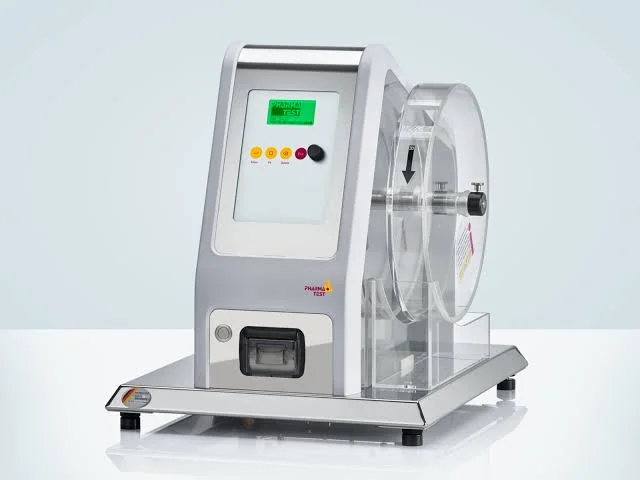If you want to prepare interview related questions on the topic of Friability testing then here you will find about 23 questions which can be asked during any test or job interview.
Q #1
Which Chapter Of USP Deals With The Friability Test?
USP general chapter number 1216 deals with Friability testing.
Q #2
Define Friability
The %age weight loss of tablets is known as Friability.
The percentage weight loss of powders from the surface of core tablets due to abrasion or attrition is known as Friability.
Q #3
What is the Friability Test?
Friability testing is the test which is performed to check the durability of tablets.
Q #4
What Are Alternative Names Of Friability Test?
Some other names which are used for Friability test are as given below,
- Abrasion Test
- Attrition Resistance Test
- Drop Test
Q #5
Which Apparatus Is Used for Friability Test?
Commonly used apparatus for Friability testing is known as Roche Friabilator.
Q #6
Types Of Drums For Friability Apparatus?
Three types of drums are available,
- Roche Type
- Vankel Type
- Abrasion Drum
The Roche type drum has a single arch and one chamber.It is used for single sample testing.
Vankel drum has two chambers & 2 arch.It is used for testing 2 samples at the same time.
The Abrasion Drum has multiple buffles.
Q #7
RPM Of Friabilator?
The rounds per minute of friabilator are 25 ±1.
Q #8
Run Time Of Friabilator?
The run time of the Friability apparatus is 4 minutes.
Q #9
How Many Rotations Of Drum Are Completed During Friability Test?
100 rounds of drum are completed in 4 minutes.
Q =10
Fall Height Of Tablets During Friability Test?
Tablets fall from the height of 6 inches or 156 ±2 mm during the Friability test.
Q =11
Angle Of Drum Base ?
Adjust drum base at 10° to avoid irregular tumbling.
Q #12
Why Do We Perform a Friability Test?
Friability testing is performed to check the strength or durability of tablets.
Tablets must be strong enough to resist breakage during transportation, coating & blistering process.
Q #13
Friability Test Is Performed For Which Types Of Tablets?
We perform a friability test for core or uncoated tablets.
Q #14
Friability Test Is Not Performed For Which Types Of Tablets?
Friability test is not performed for coated tablets.
Q #15
Why Is the Friability Test Not Performed For Coated Tablets?
Coating polymers give strength & protection to tablets against breaking.
Q #16
How Many Tablets Are Selected For a Friability Test?
If individual tablet compression weight is equal to or less than 650 mg then take as many tablets as close to get an average weight of 6.5 GM.
If Individual tablet’s compression weight is more than 650 mg then we will take 10 tablets.
Example
Suppose our core tablet compression weight is 325 mg then we will take 20 tablets to get 6.5 GM weight.
If our tablet compression weight is 800 mg then we will take 10 tablets for the friability test.
Q #17
Acceptance Criteria For Friability Test?
Friability test is considered pass if %age weight loss is NMT 1%.
Q #18
Retest/ Pass Or Fail Criteria For Friability Test?
If the friability test fails on the first attempt means tablets weight loss is more than 1% or tablets are broken or chipped then we will repeat the test twice & average of 3 values must be NMT 1%.
Q #19
Formula To Calculate Friability?
Following formula is used to calculate friability.
W1- W2 / W1 × 100
W1= Initial Weight (Before Friability)
W2= Final Weight (After Friability)
Q #20
Explain Friability Procedure?
Read the following article to read the friability test procedure in detail.
Friability Test For Tablets
Q #21
Which parameters are checked during calibration of Friabilator?
Rotations & time
Q #22
Precautions During Friability Of Moisture Sensitive Products?
Temperature & humidity of the area must be controlled during the friability testing of moisture sensitive products.
Q #23
Specifications of Drum Used In Friabilator.
The drum of the friabilator is made of transparent polymer & has an internal diameter of 283 to 291 mm.The inside radius is 75.5 to 85.5 mm & depth of drum is 36 to 40 mm.
